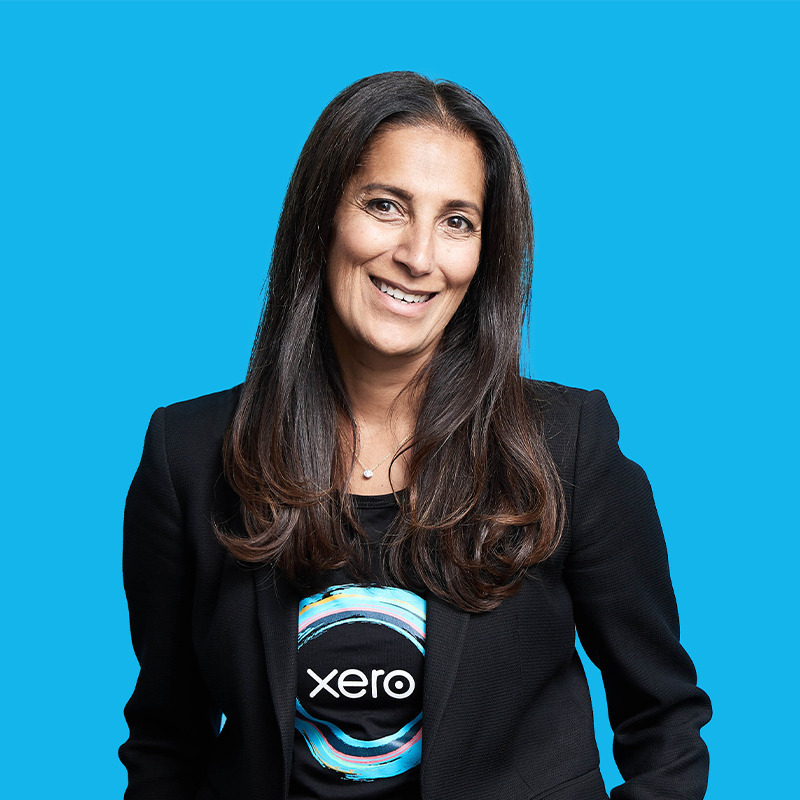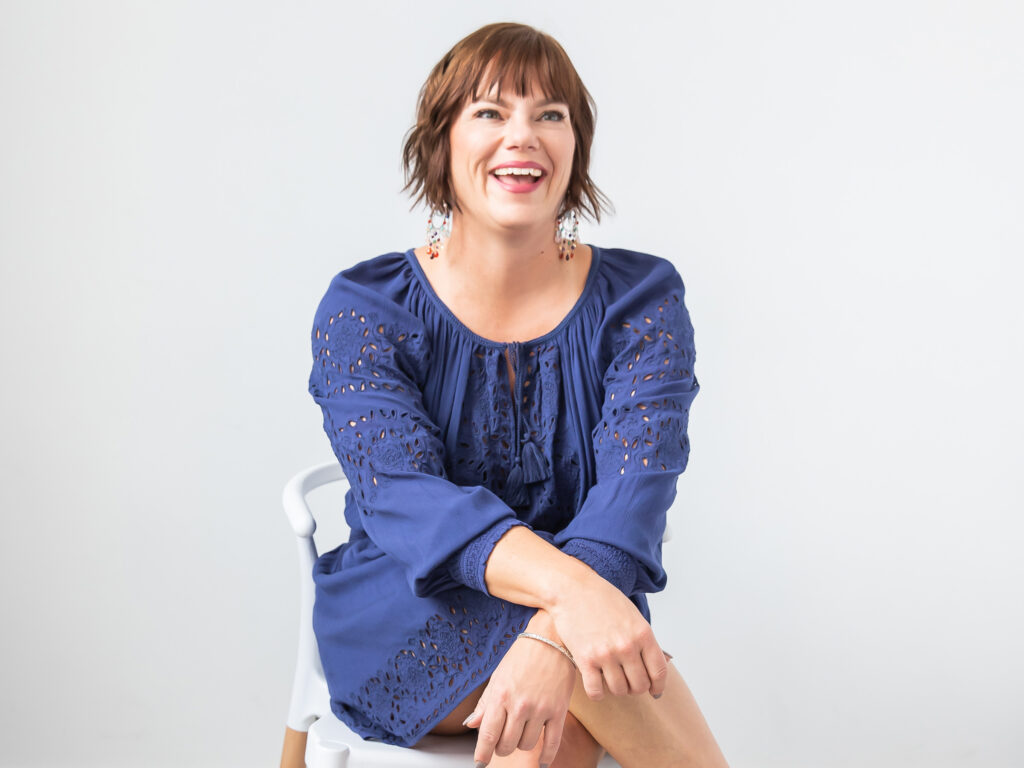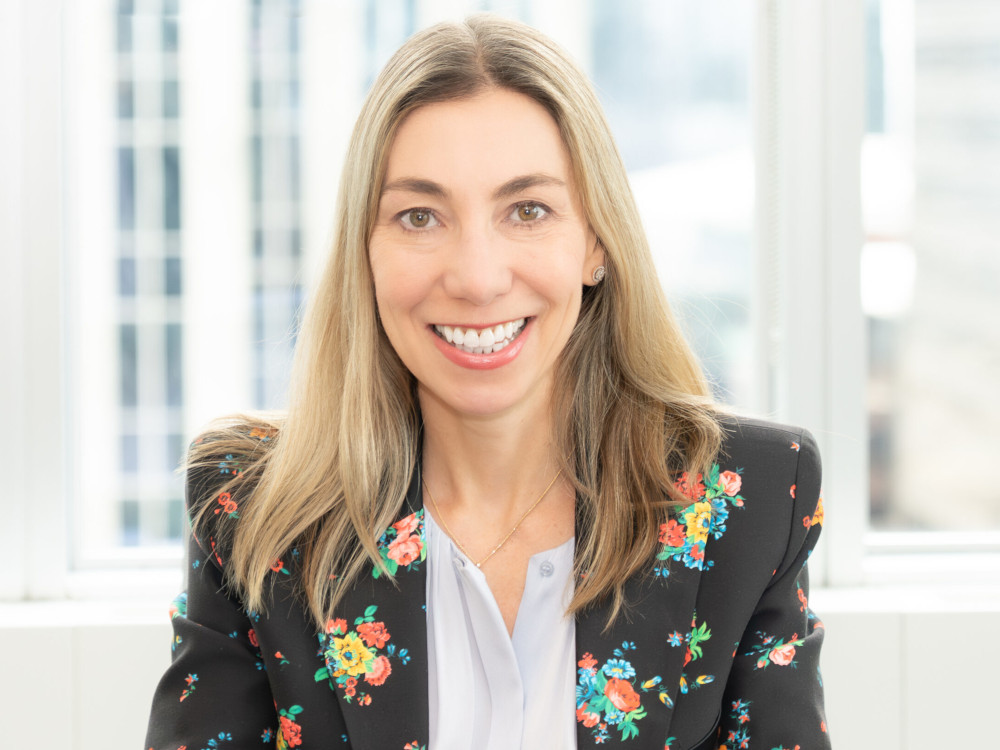Sukhinder Singh Cassidy is a Canadian entrepreneur, investor, global leader, board member, philanthropist and CEO of Xero, a leading publicly listed provider of cloud accounting software for small businesses and their advisors in over 180 countries globally. Raised in Ontario, Singh Cassidy is also one of the latest co-owners—along with the likes of tennis great Serena Williams and new media personality Lilly Singh—of the Toronto Tempo, the team that will represent Canada’s first foray into the Women’s National Basketball Association (WNBA) when it debuts next year.
Singh Cassidy has had a long and successful career as an investor and creator. Before being appointed CEO of Xero in 2022, she served as president of event-ticket marketplace StubHub and was the founder of video commerce pioneer Joyus and theBoardlist, an online talent marketplace that connects CEOs with over 40,000 qualified diverse board candidates.
Here, Cassidy shares the origins of her entrepreneurial ambitions, how her parents inspired her as a businessperson and a philanthropist, and how her frustration with clichés about women and leadership led to her most successful business deals.
You were born in Tanzania and moved to Canada at an early age. Tell us about your childhood.
I don’t recall much of Tanzania, as I left when I was 2. I did take my family there for a visit in 2017. All of Dad’s family emigrated to the US, UK or Canada, so there was no one left there. But my earliest memories in Canada make me very proud. I was born to two very hardworking and very religious parents. Everything I remember is how hard they worked. They established themselves, re-did their medical residency and recertified. My Mom at that stage was a mother of three and in her 40s, and my dad was over 50!
My whole experience was very grounded, and I got that from my parents and their incredible work and service ethic.
We lived in a small apartment in Toronto, then Hamilton, and then eventually bought a house in St. Catharines, where my parents opened a joint medical practice. Both my parents worked late, and often did night shifts at the local hospital. I do remember having wonky braids on the days my dad had braided my hair for school because Mom was still at the hospital.
We weren’t poor, but my parents had started their careers over again in Canada for their kids, so my childhood would be considered very middle-class. Of the 124,000 people in St Catharines, my dad was the only person wearing a turban as far as the eye could see, so we did stick out at the time.
My whole experience made me very grounded, and I got that from my parents and their incredible work and service ethic. I saw in them people whose purpose and vocation were the same thing. That was the most seminal thing about my childhood.
When did you first feel an entrepreneurial spark?
It goes right back to my childhood. I was in Girl Guides and went door-to-door to sell cookies, so that was early training. But the real training came from doing my parents’ taxes!
Every year around March 1 (beginning when I was 7 or 8), my father would gather our whole family around the dining room table, bring out all his chequebooks for the past year, and have us start recording every expense from the practice in his physical ledger. As tax day grew near, the frenzied activity would accelerate—our army of family accountants working until the very last minute to figure out the year’s income, profits and taxes owed. By 12 or 13, I could do most of the tax return, and by 18 I’d built an Excel spreadsheet to speed up the system. But essentially my understanding of entrepreneurship and small business growth was built line by line with each ledger entry in my youth.
This formative experience provided me with firsthand insight into the inner workings of a small business. I got a bird’s-eye view into how small businesses are built—line by line of revenues versus expenses. It was not glamorous, but it was tangible! I think it normalized entrepreneurship in some way.
It also helps explain why so many entrepreneurs are in fact the children of entrepreneurs, and it was no different for me, as I’ve also gone on to start three businesses of my own in tech. Today, as Xero’s CEO, I feel like I have come completely full circle. Our purpose is to make life better for people in small business, their advisors and communities around the world. This purpose resonates with me specifically because of my upbringing as the daughter of small business owners and an ultimate small business owner myself.
Who were your champions as you set out on your own path?
Undoubtedly my father. I saw that my dad loved being a small business owner and loved business, too, and somehow I learned that from him. He was an active stock trader and bought tech stocks early—like AOL! Mom couldn’t understand why I didn’t want to be a doctor or an engineer, but Dad was thrilled with that, and even more so when I got my first job on Wall Street.
I have grown frustrated with the narrative that there aren’t enough qualified women leaders to fill the C-suite or boardrooms.
My dad also always told me to work for myself. I went to undergraduate business school and said, ‘I want to be an executive,’ because I thought that’s what you should do, and I chose investment banking as my starting career. But in my mid-20s, after working for a large corporation (Sky TV in London), I decided that I wanted to be an entrepreneur, so I moved to Silicon Valley and joined the startup industry there.
Women and people of colour face numerous challenges when it comes to attracting capital and investors. What has been your experience?
During my career in tech specifically, I have grown frustrated with the narrative that there aren’t enough qualified women leaders to fill the C-suite or boardrooms. So, I founded theBoardlist in 2015 to get rid of that myth. theBoardlist launched as a platform almost nine years ago, to provide recommendations of leaders of diverse backgrounds who could then be searched in an online database when companies were looking for great board talent. Since launching, and merging two years ago with BoardProspects, the platform has grown from 600 female candidates on a spreadsheet to a full talent marketplace for board members of all types. We have over 70,000 members on our email list, over 40,000 recommended candidates of all backgrounds, and thousands of prospective board members being discovered for opportunities and connecting with each other on board topics.
Beyond my work with theBoardlist/BoardProspects, I’m passionate about seeing gender representation in every field, from the boardroom to the C-suite to on the field. There are plenty of opportunities to invest in women, both with money and effort. This has led to my own for profit and non-profit investments, including with the Ivey School of Business, my partial ownership of the Toronto Tempo basketball team, and investing in female-founded startups over many years.
Can you tell us more about how your parents inspired you through your first investment milestones?
My parents worked hard, but also saved and invested wisely. I saw them build home equity and strong RRSP accounts that positioned them well for retirement as safe investments. Importantly, I also saw my father invest in stocks and bonds actively as a personal passion and take risks like investing in tech stocks early, too. So, I learned that to create wealth you have to be both a saver and an investor.
I’ve had my share of investment milestones—and both successes and failures in investing of course. My first stock investment was in a savings and loan, when I was working as an analyst at Merrill Lynch. I made money on it. What did I learn from it? Invest in what you know. My second big investment was a fail, during the dotcom bust. My broker at the time told me to sell the Amazon stock I owned (through the acquisition of a startup where I was an employee) and buy into a high-flying single digital stock he recommended that I knew nothing about. You can guess where that ended when that stock went to zero. I was in my late 20s and I learned the hard way about risk diversification then.
My third investment was buying my first home in my late 20s, with the help of my mom in making my original downpayment. I learned about the value of building home equity versus paying rent and about capital gains. That was a wise lesson and a valuable one.
What challenges have you faced as a female investor and how have you overcome them?
Well, the first important point here is that women need to learn to become investors, not just savers, if they want to build wealth. I wrote a book called Choose Possibility about how to take more professional risk in your career, and unfortunately the research is clear that women take less risk than men in most spheres, even when it’s the good kind of risk. So instead of leaving the learning about money to someone else, or leaving it all in the bank, I think the world needs more women to be investors.
As a woman, you already know a lot more than you think about what great investments might be if you put your consumer hat on.
The second thing I want to say, before I talk about the challenges, is that the opportunity to be a female investor is a great one. I feel like I have a unique understanding of many of the companies I’ve invested in as a female consumer. Women control household budgets and are half the population, so they influence demand, taste and purchasing decisions. So, as a woman, you already know a lot more than you think about what great investments might be if you put your consumer hat on. This knowledge led me to become an early investor in e-commerce companies like Stitch Fix, The RealReal, Reformation and Babylist, and today I am an angel investor whose portfolio is pretty gender-balanced.
In terms of the biggest challenges as a female investor, it’s about access to opaque or alternative investment opportunities that may be offered only to small homogeneous circles of investors that may skew male. When we think about alternative investments like a private equity fund, a hot venture capital investment or a sports team, these are often not marketed at all, and the vast majority of this capital is managed by men. There are so few women fund managers who control the capital in the first place and then direct where those dollars go, and who else has access to investing in those same opportunities?
This is why I helped Acrew Capital (a Silicon Valley fund with two women partners) raise the Diversify Capital Fund in 2021. The DCF fund was a $300-million growth fund where we not only directed the investments, but also allowed hundreds of diverse executives to join the fund alongside us as limited partners. For many of them, it was the first time, even as key business leaders, that they were invited to participate in a venture capital fund and had access to this investment class.
This is also why I’m so excited to be able to invest in the Toronto Tempo, another alternative and fast-growing investment class in professional women’s sports. Legally, ownership groups in the NBA are restricted to a small number of total owners, so I’m grateful that Larry Tanenbaum and the group behind the team cared about bringing in female owners and having a cap table with so many amazing women leaders also supporting this team.
What was the inspiration behind Joyus and theBoardlist?
Well, Joyus and theBoardlist were my second and third companies. Yodlee, the fintech platform that is owned by Envestnet today, was my first, and that one is over 20 years old and still going! But let me answer the question on the other two.
My first CEO job, after being a senior executive at Google for six years, was at Polyvore in 2010. Polyvore was an early version of Pinterest, where women put together mood boards for fashion and interior decor. I saw firsthand how much brands loved users creating shoppable content. When I left Polyvore in 2011, that idea stayed with me. I also knew from my time at Google that YouTubers were showcasing ‘shopping hauls’ in videos. I spoke with a venture capitalist about shoppable commerce at the time and said, ‘Why is nobody doing shoppable videos? Why wasn’t YouTube adding a shopping cart?’ QVC and HSN were TV shopping networks, but there was no similar content online where you could watch and shop at the same time.
It seemed so obvious that it was a billion-dollar idea because of my experiences at Polyvore and my YouTube knowledge. So, I started Joyus, as the first video shopping network on the Internet. We grew the company over five years to almost $20 million in revenue, but it was still losing cash. Meanwhile, Instagram and YouTube had no shoppable capabilities and TikTok didn’t even exist. Many folks told me that shoppable fashion and beauty videos we created in our studios with influencers were ‘just not content!’ By 2016, we couldn’t raise more capital and sold the company for very little.
Of course, in the last five years, shoppable content has become mainstream, so it’s a shame. We were almost 10 years too early and didn’t have the mainstream video platforms that exist today to leverage for cost-effective distribution of our videos. This is often the lesson of Silicon Valley—you can be right on the idea but wrong on timing, creating something too early and before the mass consumer is ready for it.
While I was still running Joyus, one of my board members complained that even though he had five female CEOs in his portfolio, all anyone could write about was the negative experience of women in tech. I, too, became irritated with the narrative. I surveyed a bunch of female founders I know and wrote an op-ed called “Tech Women Choose Possibility.” Essentially, it said that being a female entrepreneur was still pretty empowering, but all the issues with discrimination and harassment in tech and investing were real, too. Getting more women into the tech pipeline bottom-up was fine, and also in STEM, but why couldn’t we solve gender equity issues from the top down?
I wanted to put women in the boardroom of every Silicon Valley company. I crowdsourced 600 great names and launched a spreadsheet called theBoardlist in 2016, which grew to over 40,000 nominated candidates, thousands of new leaders discovered for boards and hundreds of board seats we influenced. We ultimately added diverse board members beyond women, merged with a full governance platform called BoardPropsects in 2022, and the work to build great boardrooms using technology and community online continues today. I remain the founder and largest shareholder of the company, and I am proud that it continues to grow its scale and impact.
What has your journey been from there to Xero?
I learned early that successful careers are made by pursuing multiple choices in sequence rather than betting on a single choice. My career has been a lesson in choice-making and trying to create impact where you are each day. If you can have impact, it doesn’t really matter if you succeed or fail in a single choice—you will be able to build a successful career long-term.
I learned early that successful careers are made by pursuing multiple choices in sequence rather than betting on a single choice.
After Joyus, I decided to head back to running larger-scale businesses and became the leader of StubHub, the global ticketing marketplace that was owned by eBay at the time. I loved continuing in ecommerce after my time at Joyus and knew a lot about how to create great consumer marketplaces online after being a founder. I loved the business of live sports and entertainment, leveraging technology, and led it through a spinout from eBay and a $4-billion acquisition by Viagogo, and then through the COVID crisis, which was a crazy period. But StubHub survived and is now thriving under its new owner, which is great.
Post-StubHub, I wrote Choose Possibility, about professional risk-taking, and was an operating partner at Acrew Capital, where I helped raise the growth fund and did some growth investing while looking for my next full-time opportunity. I continued to do board work through this period (Urban Outfitters, Upstart) as well. When I got the call about the opportunity to run Xero, I knew it was exactly what I wanted.
I was already a Xero customer because we ran theBoardlist’s finances on Xero—and I told my husband that day that this was the job I wanted. It’s a tremendous opportunity to lead a small business software platform that is truly global, with a purpose and performance-driven culture. We have a large and exciting opportunity to make the lives of more small business owners and their advisors around the world better. I am fully focused on driving Xero’s aspiration to build a world-class global SaaS business. One of the reasons I came to Xero was to do great work with great people, in an environment consistent with my values, and I recognized that alignment immediately.
Throughout my career, I have gravitated to environments where my values fit with those of the organization. And like I said, I feel as if I have come completely full circle from sitting at the kitchen table as young girl with all the chequebooks helping my dad do his bookkeeping. I love the idea of helping small businesses thrive and also bringing an entrepreneurial spirit to this large platform, so we can keep hustling to do better for our customers, as they do each and every day themselves.
How did your investment in Toronto Tempo come about?
Last year, the WNBA announced its expansion into Canada with Toronto Tempo, the league’s first outside of the U.S. The opportunity to be part of the absolutely powerhouse ownership group is, in many ways, the culmination of both my personal passions and my professional experiences. We talked about how hard it can be to learn about these opportunities and get access to them, so I’m grateful that when I was connected to Larry Tannenbaum through a mutual connection, he already had a vision to build a diverse and representative ownership group behind this team. As a proud Canadian, huge basketball fan, and someone who’s passionate about seeing gender representation in every field, the opportunity to invest and contribute is a privilege. There’s never been a better time to invest in women’s sports, and I look forward to supporting the team and Canada’s journey as the first global WNBA franchise.
How do you give back to your community, and how do you teach your children about giving back in any manner?
First of all, I believe, as my parents did, that giving back can include your day job! I have always sought to work at companies where I believe I’m not just making a living but making a difference, so I don’t see ‘giving back’ as just philanthropy. When it comes to giving back beyond work, there are two issues I’m passionate about and put my efforts and my dollars towards. One is economic mobility and the ability for everyone to be able to not just survive but thrive. The second issue, of course, is equal access to opportunity for everyone, and gender equity and rights.
On the first topic, I’ve been a board member and advisory board member to JobTrain, one of the Bay Area’s largest nonprofits that helps people in need get vocational training and job services, for the last 20 years. I love the impact they have right here in the local community in which I live and where, unfortunately, the economic divide is wide and getting wider.
There’s never been a better time to invest in women’s sports.
On the second topic, beyond starting theBoardlist, my investments in women-founded startups and the Tempo (which is not philanthropy but putting my capital behind great opportunities), I have recently made a new investment with the Ivey Business School to make sure women’s stories are also told and taught in business schools and executive education around the world. Ivey—which is my alma mater and of course one of Canada’s leading business schools—is the second largest producer of case studies in the world. Together with Ivey Publishing, we launched the annual Ivey Women Investing in Leadership Case Writing Competition this past International Women’s Day 2025. The competition will foster case writing of new cases each year which feature women as the protagonists, to make sure that business cases are also balanced in who they portray. We all know the adage ‘If you see it, you can be it,’ and it’s time we see more cases taught at leading business schools around the world that feature women more regularly.
When it comes to our children, they are early in the world of service and impact. While they all have participated in service projects through school, mostly what we seek to create in our home, by example, is the same ‘normalization’ of having impact through work, and giving of your time, energy and money, that my parents showed me. My husband is a local high school swim coach and prior to this taught track-and-field at another local high school. This is his third career after having been a professional money/hedge fund manager, and before that a professional triathlete in Canada. He gives back every day through his job as well, and I’m sure the kids see it. We expose them to most of what we do, whether it’s watching our different career paths, or inviting them to come to JobTrain’s Annual Breakfast to learn more about it, or chatting about opportunities to angel invest in things like the Tempo.
I don’t think raising our kids is necessarily about lofty speeches. I got none of that in my childhood, but I learned by osmosis and saw how much impact my parents quietly had in their day-to-day work and orientation. I hope our kids feel some of that, but let’s see as they all grow what they take from it.
Get our new quarterly newsletter about philanthropy: Canadian Family Offices’ new newsletter brings you key insights, trends and expert perspectives on charitable giving, tailored to Canada’s wealth leaders and giving communities. Click here to subscribe now to stay ahead.
Please visit here to see information about our standards of journalistic excellence.




